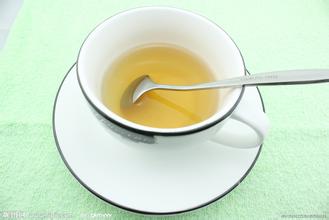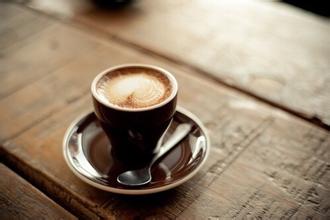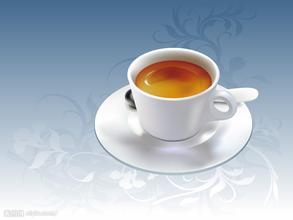How to order a cup of coffee in a cafe exactly (zhuang)
When you go to a coffee shop and look at the various "lattes","chinos" and "chidos" on the menu, many people will be overwhelmed. Ask the waiter or a friend around you? This kind of thing must not be done. How do you order the right cup of coffee? Go home and catch up on coffee.
The World Coffee Map is the globally recognized coffee bible by James Hoffmann, a coffee legend and winner of the 2007 World Barista Competition. In this book, he not only comprehensively combs coffee producing areas with first-hand information collected from all major producing areas around the world, but also gives out his experience and professional secrets for coffee fans around the world, such as how to make a delicious cup of coffee with tools such as press pot, mocha pot, Philharmonic pressure, hand flush, siphon pot, etc. at home, and gives insight into various doubts and common fallacies that fans may encounter.
Let's see how James Hoffman describes the coffee that is common in coffee shops.
Espresso (Italian espresso)
Espresso has many defining benchmarks, some of which are extremely precise requirements, others are broader criteria. My definition of espresso is as follows: a small, strong drink with finely ground coffee powder extracted at high water pressure. I would also say that espresso coffee must have crema, or more precisely, a water-to-powder ratio of about 1:2. I prefer to define espresso in broad terms rather than dwelling on the details of right and wrong.
Espresso (Ristretto)
The original name of the coffee drink is Ristretto, Italian for "Restrained", the concept is to make a cup of coffee that is smaller and stronger than standard espresso. With the same amount of coffee powder but a relatively small amount of water extraction, coffee grinding is finer, so that it can maintain the same extraction time, so that all the pleasant aroma of coffee can be extracted.
Long extract espresso (Lungo)
Long-extract espresso is less fashionable for the specialty coffee industry these days. Espresso machines are used to make coffee with the same amount of ground coffee, but with two to three times the amount of water extracted, making a larger cup of drink that tastes thinner. For experienced consumers, long-extract espresso coffee lacks thickness and taste, and usually tastes horrible, bitter and smoky.
But there's also a recent trend in the specialty coffee industry: long-extraction brewing of lighter roasted beans, which produces coffee with a high degree of complexity and balance that I find delicious. If you've ever wondered how to balance the sourness of an espresso recipe, try a longer extraction, grinding slightly coarser and allowing the water to flow faster to avoid over-extraction.
Macchiato
The name of the drink comes from the concept of "marking" espresso coffee with a little foam. It is common in Italy for a very busy barista to have several espresso cups in front of him, waiting to be served to customers in line. If one of them likes a little milk, the barista will pour a handful of foam as a sign. If you simply pour a little milk into a freshly made espresso, the milk will quickly disappear into the crema, making it difficult to tell what the drink is with the naked eye.
A decade or so ago, many quality-oriented coffee shops made a different change to macchiato, defining macchiato directly as a drink with foam directly on top of espresso, usually at the request of consumers. Such consumers want a slightly larger, less intense, sweeter drink, but some baristas make macchiato to show off their ability to pull flowers in very small cups.
One confusing exception is Starbucks 'Caramel Macchiato, a very different drink, closer to latte, but marked with caramel sauce. This name can cause confusion among some consumers, especially in North America, so some cafes specifically label their macchiato as traditional.
Cappuccino
There are still many legends about cappuccino coffee, and the name cappuccino used to be associated with the color of the ancient monk's robe or the monk's bald haircut, but this myth is broken: Cappuccino's old name Kapuziner is a drink from Vienna in the 19th century.
Another modern legend about cappuccino is the so-called Rule of Thirds: traditional cappuccino coffee must be one-third espresso with one-third milk and one-third foam. My coffee career started out this way, too, although the rule had no basis at all. I've read many books about coffee, and the first book to mention cappuccino's rule of three was written in the 1950s, describing cappuccino as "a drink made of espresso mixed with equal amounts of milk and foam." The same sentence appears many times in this book. This description is a bit ambiguous, you can think of it as just milk and foam in the same proportion, or you can think of it as coffee, milk and foam in the same proportion, so you don't necessarily set the ratio of production at 1:1:1, it may also be 1:2:2. A cup of cappuccino has a total capacity of about 150-175 ml. The practice of making an espresso and then mixing it in a 1:2:2 ratio has a long history and is still common in Italy and parts of Europe in non-fast food chain systems. This drink is extremely delicious when well prepared.
I think a great cappuccino is the pinnacle of all drinks with milk, and the combination of rich, firm foam and sweet, warm milk and well-extracted espresso is the ultimate treat. Cappuccino tastes sweeter when it's near lukewarm, and the best cappuccino I've ever had is so good it's easy to drink in two or three gulps, which is impossible when the coffee's still hot.
Caffe Latte
The drink did not originate in Italy, and when espresso first spread around the world, it was an unusual coffee full of bitterness and intense flavor for most people. The bitter taste of espresso is a problem for some people, so adding hot milk can make the drink sweeter and less bitter. Latte is a coffee drink invented to satisfy customers who want a less intense flavor. Lattes traditionally have more liquid content than cappuccinos, coffee is less dense in flavor and usually less frothy. I've been careful to call latte Caffelatte rather than Latte, because if you're traveling in Italy and you open your mouth to order a Latte, you're going to get a glass of milk.
Small espresso latte (Flat White)
Different coffee cultures produce different coffee drinks, and although it is still controversial whether small espresso lattes were invented in Australia or new Zealand, it is undeniable that the drink spread from Oceania and Asia through expatriates to Europe and North America. In the UK, the term first appeared in the supply lists of quality-conscious cafes, and then mainstream chain stores began to adopt it in their supply lists. But the drink may have a more humble origin, as it was common in most parts of the world outside Italy in the 1990s for cappuccino to have a large, dry Meringue-like foam on top. Sometimes this makes the top of the coffee look like a mountain, and sometimes it is carefully decorated with chocolate powder. Many consumers are unhappy with buying a cup of coffee that is mostly air, and start asking for a flat, white cup of coffee, no foam, just coffee and milk. This quickly became a culture, especially as people became more focused on quality, texture and the art of pulling, and the espresso latte was redefined as a delicious coffee drink.
The best I can say about a small espresso latte is that it is a small but strong latte, which should have a strong coffee flavor, usually with a double espresso or double espresso as the base, covered with hot milk, making a total capacity of 150-175 ml, milk added only a little foam, this rule will facilitate the art of pulling flowers.
American Light Coffee (Americano)
The story begins with World War II, when American troops marching through Italy found espresso too strong, so they asked baristas to add some hot water to espresso to dilute it to the strength that American troops drank at home, which became known as Caffeamericano.
Although somewhat similar to follicular coffee, I think American light coffee tastes worse, and American light coffee is still popular with coffee shop owners because it has the same strength as follicular coffee and does not require additional equipment.
My advice for making American light coffee is very simple. Pour fresh, clean water into the cup and pour in a double espresso. If your espresso machine has a steam boiler, draw hot water directly from the steam boiler. However, if the water in the steam boiler has not been used for a long time, the taste of the water may not be pleasant.
Some people claim that espresso should not be poured into boiling hot water, and that espresso should flow directly from the machine into the hot water. I don't think there's much difference between the two, it just makes the coffee look clearer or more beautiful.
There is a downside to diluting espresso: you get a bit more bitterness, so as soon as you finish brewing your American light coffee, I recommend removing the crema immediately above. Although the crema looks beautiful, it contains a lot of fine coffee powder, which may contribute to the bitterness of the cup. Scratch off the crema before you stir and drink your espresso. This action will definitely give your espresso a better flavor. (I also recommend shaving off the top crema when you taste espresso coffee; the difference is obvious.) Although I prefer espresso coffee without crema, I don't want to be superfluous and prefer to drink it with crema. As for drinking American coffee, I think the extra action is well worth it.)
Coffee (Cortado)
It is one of the few coffee drinks not of Italian origin, originating in Spain, most likely Madrid, where codado coffee is found everywhere. Traditionally spaniards brew espresso in larger portions, lighter than italian espresso, and to make a cup of codado you need 30ml of espresso with the same amount of foam, which is usually served in a glass. The drink seems to have spread around the world, with new definitions in different places, but here's the basic concept of codado coffee

Important Notice :
前街咖啡 FrontStreet Coffee has moved to new addredd:
FrontStreet Coffee Address: 315,Donghua East Road,GuangZhou
Tel:020 38364473
- Prev

FUSE modular coffee machine can even grind coffee beans.
Tencent Digital (translated: Bear) if you are a coffee lover who wants to have a cup of coffee at any time, whether you get up in the morning, arrive at the office, have afternoon tea or go to bed, you must make a delicious cup of coffee yourself, and this kind of fun is absolutely impossible for instant coffee. Ordinary coffee machines are very expensive, and some of them are still
- Next

Regular coffee drinking may reduce the risk of skin cancer, US research says
Drinking caffeinated coffee can help reduce the risk of basal cell cancer, a common skin cancer, according to a study completed by researchers at Harvard Medical School. The researchers analyzed the data of 112000 people who took part in the Health Occupational follow-up study and Nurses' Health study for more than 20 years and found that women who drank more than three cups of caffeinated coffee a day had a higher risk of basal cell cancer.
Related
- Beginners will see the "Coffee pull flower" guide!
- What is the difference between ice blog purified milk and ordinary milk coffee?
- Why is the Philippines the largest producer of crops in Liberia?
- For coffee extraction, should the fine powder be retained?
- How does extracted espresso fill pressed powder? How much strength does it take to press the powder?
- How to make jasmine cold extract coffee? Is the jasmine + latte good?
- Will this little toy really make the coffee taste better? How does Lily Drip affect coffee extraction?
- Will the action of slapping the filter cup also affect coffee extraction?
- What's the difference between powder-to-water ratio and powder-to-liquid ratio?
- What is the Ethiopian local species? What does it have to do with Heirloom native species?

